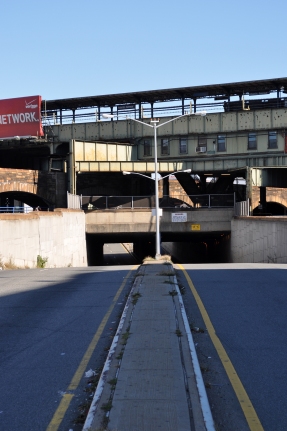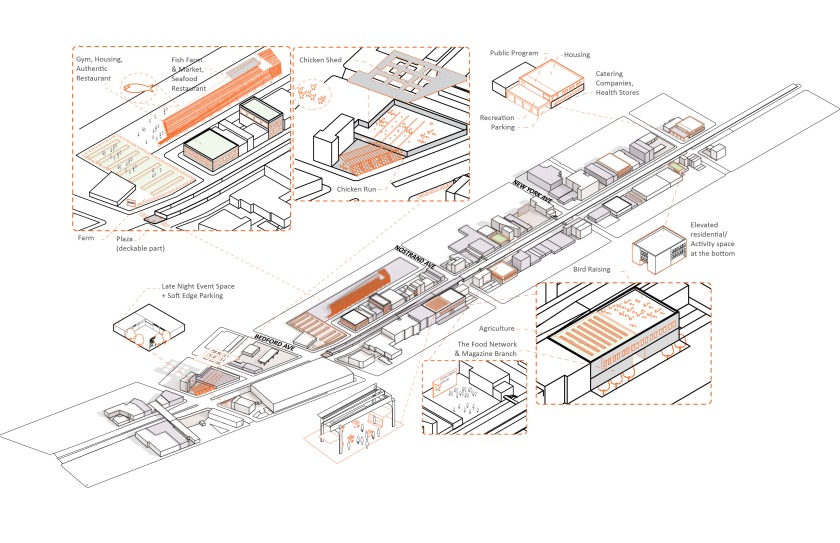The edge of the city is no longer identifiable. Although communities that reside along a city’s blurred edge are traditionally classified as ‘urban,’ they are areas of neglect that should be classified as the periphery. They share the same characteristics, challenges and opportunities for adaptation as we see in the suburbs.
Authors: Eiman Al Sakha, Ankita Chachra and Ryan Jacobson
A fortification that protected it from invasion clearly marked the edge of the ancient city. Prague, Vienna, Rome, Istanbul, Jerusalem, Cairo, and even San Juan still show traces of the edge that defined their boundaries; elements which articulate the character of each city. In highly apparent contrast, American cities have an ever-changing, indeterminate, undefined edge that is marked by nothing but a small highway sign that reads, “Welcome to (Insert City).” It lacks elements of unique character that have allowed many ancient cities to retain their charm. Instead, the edge of a American city has turned into a barrage of fast food restaurants, auto repair shops and endless parking lots. Not to say this hasn’t served its time, but there is a need to rethink the way a city meets the suburbs.
The rise in popularity of transit-oriented development (TOD) now puts even more pressure on developing the transition zone between the city and suburbs. In TOD’s, infrastructural investments extend past the city’s edge to replicate a version of the urban amenity within a new context. These newly created sub-cities allow the suburbs to offer a comparable lifestyle to the city that leverages on access, real estate and convenience. During the development process the city’s edge is bypassed by major investors and becomes the responsibility of capacities with far less resources. Existing communities on the edge loose their relevance amongst regional competitors and are left with a deteriorating urban fabric that is characterized by obsolescence.
The community on the edge of the city is transient. Over time the edge shifts based on trends in real estate, access to resources and infrastructure, and social perceptions of what is still considered to be “the city.” During an edge condition’s period of neglect the city leaves behind permanent artifacts of what once may have been a thriving community. Time can only tell when the ‘abandoned child’ will once again receive attention. And when that edge community finally upgrades and diversifies, a new series of neighborhoods will be caught in its wake of obsolescence.
When the community on the edge of the city is in its post-urban state it suffers most from vacancy. The supply is greater than the demand so neighborhoods decrease their density while building occupants emigrate to places that provide greater opportunity. The streets become empty and the community homogenizes. Even though the land use is zoned for a higher density, investors are reluctant on building to that density. The edge community, naturally and accidentally, acquires the characteristics and challenges that define the suburbs.
East New York is an edge community at the periphery of Brooklyn. It has been trapped between regions of high interest and investment; from Bushwick’s hipster warehouse lofts, the treelined Brownstone neighborhoods that radiate from Jay-Z’s new palace (The Barclays Center), to the far-reaching suburban renewal districts in Long Island, such as Levittown. Like any other edge or periphery, East New York has not only been identified by disinvestment, but is evidence of change in lifestyle that has prompted exploitation of physical landscape through sporadic density and excessive waste of space. Almost such, that it’s safe to say that it possesses characteristics similar to declining suburbs: auto-centrism, under utilized public transit, abandoned structures and a declining density. East New York is the forgotten interstice along Atlantic Avenue, which ties together Brooklyn’s urban core and the Long Island periphery.
The glue, Atlantic Avenue, has a streetscape that favors convenience rather than experience. It is only suitable for high-speed drivers and is considered to be one of the most dangerous street to cross in all of New York City’s boroughs. Atlantic Avenue’s auto-centric culture is evident in the business occupants that line the avenue: auto thrift shops, used car lots, auto repair shops and auto dump yards. These dying industries are joined by imports from the suburban periphery: strip malls, big box retail, fast food drive-throughs and a plethora of parking lots. It is difficult to understand how processed frozen meals, driving for a gallon of milk and typical signs of American over consumption (Thank you Target, Walmart and their likes) have entered the context of Brooklyn; a place that is characterized by its art boutiques, mom and pop butchers, and organic grocery stores.
The Atlantic Branch of the Long Island Railroad was once a highly travelled transportation option that included 22 stations in Brooklyn. However, the commuter rail line now only stops twice along that four-mile stretch before bypassing Brooklyn’s edge communities in route to the Long Island suburbs and beach destinations. This change is still ingrained in the urban fabric as evidence points to the late 19th century ivy-covered, abandoned station at its East New York stop. The local neglect for this regional line is also visible in the underutilized, obsolete and dead spaces that exist under the rail infrastructure.
East New York’s subway station, Broadway Junction, has the 10th most MTA subway lines stopping yet the station’s annual ridership ranks 157 out of 468 stations in New York City. The area does not offer employment, residential nor cultural activities that would allow Broadway Junction to become a destination. A heavy amount of high-speed roads, barbed-wire chain link fences and empty sidewalks frighten the pedestrian from walking near the station. The lack of diversity in uses and program, further add to its blighted suburban character.
As these characteristics of the suburbs have spilled into East New York we begin to question its relationship whether it’s relating back to the urban or the suburban? It meets at a clash point where under-utilized urban infrastructure exists in a suburban context. The existing landscape, although deteriorating, offers an immense potential for adaptive re-use and should be viewed as area for opportunity. The design solutions render a series of interventions that showcase temporality, reoccurrence and permanence.
The under-utilized landscape of Atlantic Avenue was documented in an effort to categorize suburban typologies.Taxonomies of under-utilized built fabric, under-performing parking areas, and vacant lots, allowed the us to understand the physical character of the avenue (Figure below).
The regional goal for Atlantic Avenue should be to integrate a series of multi-use, vibrant programs in order to create a more dynamic pedestrian experience that stitches the urban fabric of the adjacent communities. We suggest that the most efficient way in doing so is to feature vacant and under-utilized spaces as the ideal candidate for adjacent communities to directly influence their spatial needs. This will change the ‘back yard’ perception of Atlantic Avenue and allow for it to become a center for commerce and community. The strategy for these infill interventions suggests minimal permanent change to the existing structure of the spaces as they are geared toward more flexible solutions that generate instant revenue. The proposed programs realize the ever-changing city edge and accommodate by offering temporary, semi-permanent and recurring urban events. The hyper-concentration of re-organized spaces is supported through thematic programming, which strives to create urban identity by clustering businesses of similar interests. (Figure below).
Moving back to East New York, the second scale of intervention requires public investment to improve the fate of the neglected community on the city’s edge. A high-quality investment to the public realm allows Broadway Junction to become a destination. The re-use of MTA parking lots would introduce a unique public space enhanced by vistas and shadow patterns created by the elevated rail structure. The evolutionary beauty of the steel truss would create interest for one to engage in the space. Broadway Junction’s transformation would offer a safer environment for pedestrian activity and provide a platform to generate real estate growth.
East New York is one of the examples that was explored and realized for its present nature. These conditions are recurrent and true for a number of thriving American cities. The common thread that ties these examples of ‘sub-city’ is that they all lie within the city limits yet exhibit suburban behavior.






